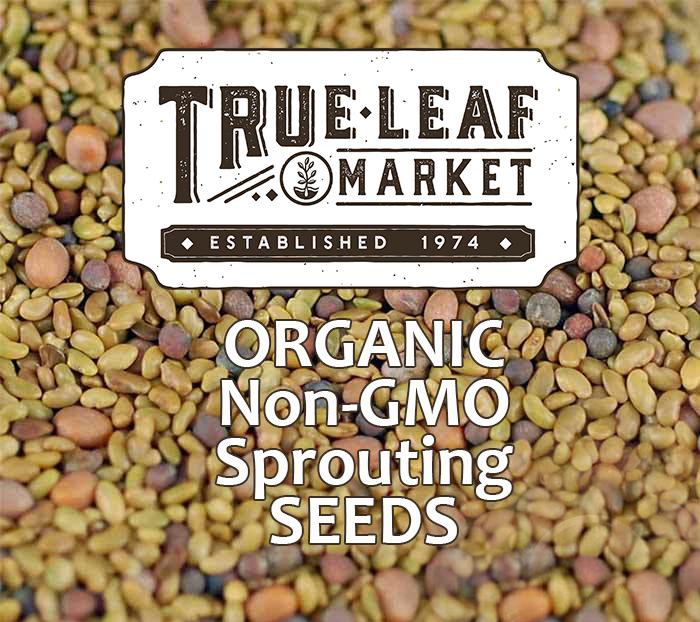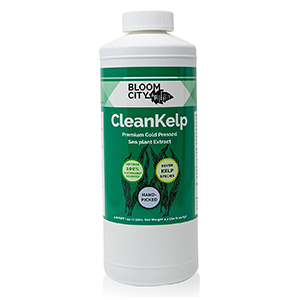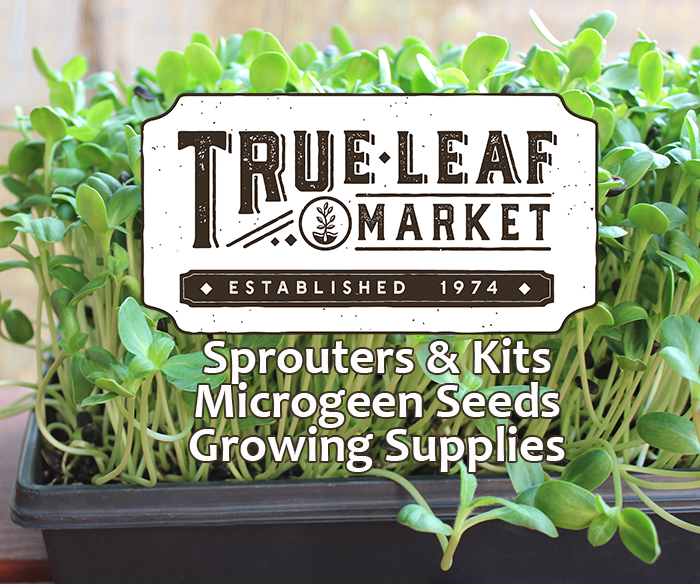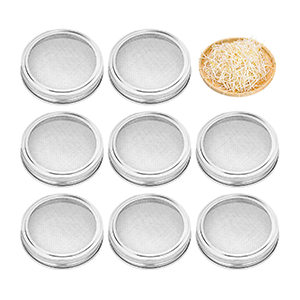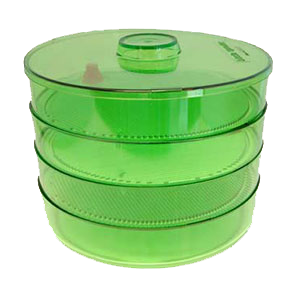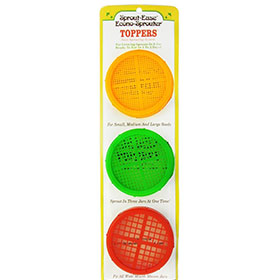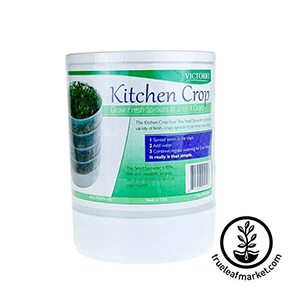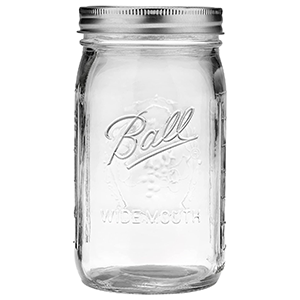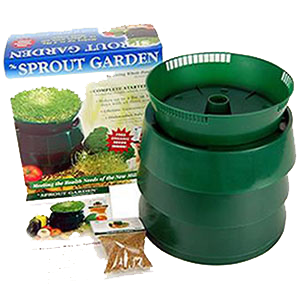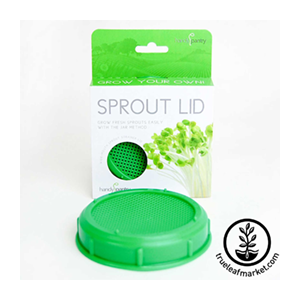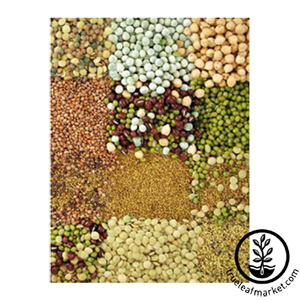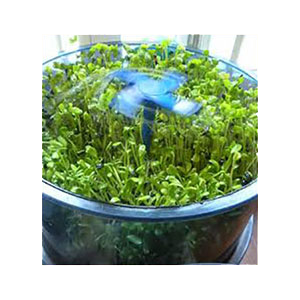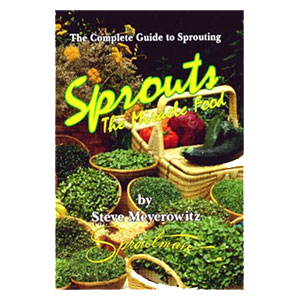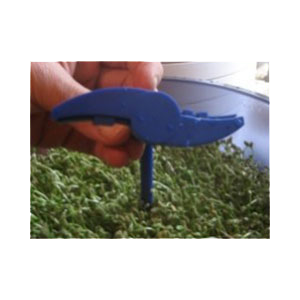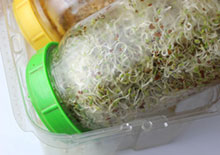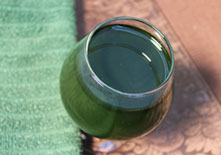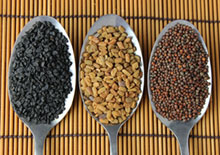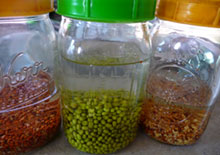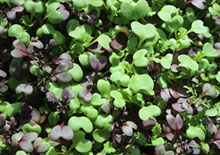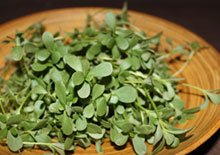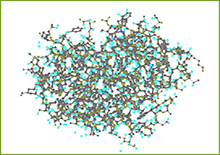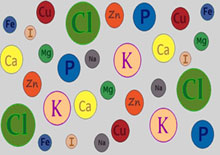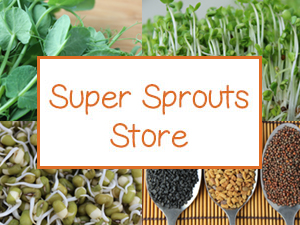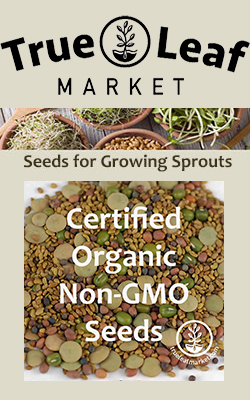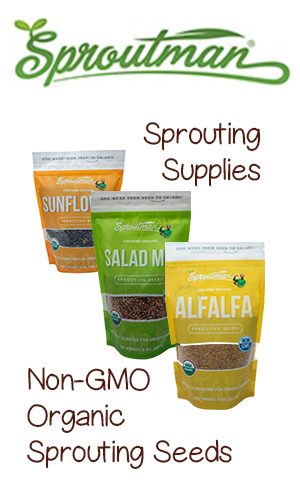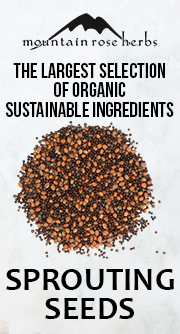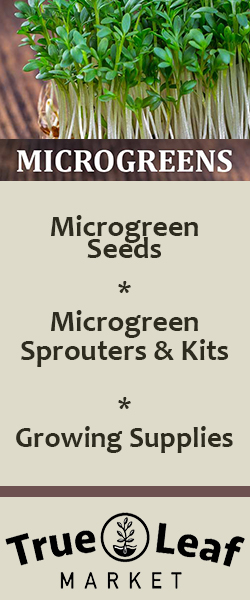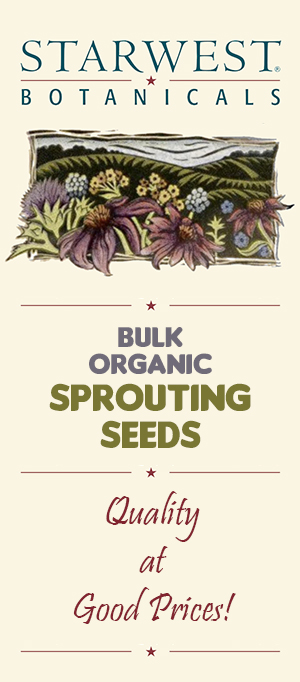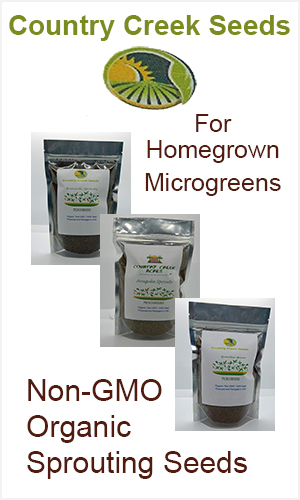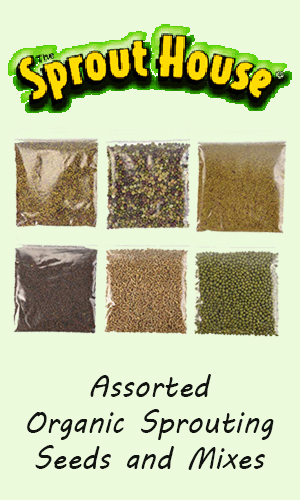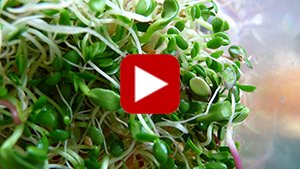- Home
- Super Sprouts
Growing Super Sprouts, Types of Sprouts and Their Benefits
Intro | Health Benefits of Sprouts | How to Grow | Top Types of Sprouts | Where to Buy Seeds | Precautions | Shop
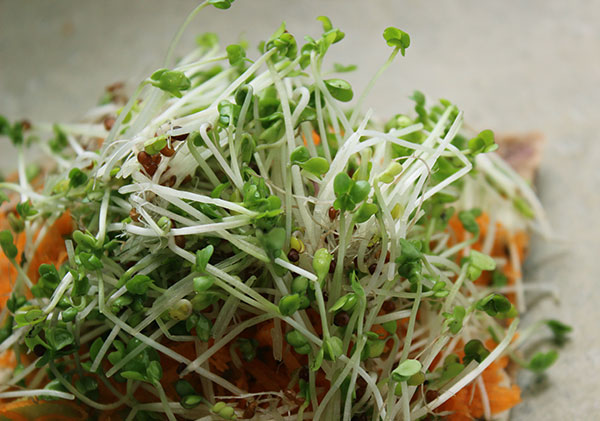
What are super sprouts exactly? Sprouts are a raw, living superfood germinated from the seeds of various plants. When sprouted, they provide a highly concentrated source of predigested vitamins, minerals, amino acids, fatty acids, chlorophyll and other health-enhancing phytochemical compounds unique to each sprout variety.
Living seeds release these nutrients upon sprouting to naturally help the plant develop during the beginning stages of its growth cycle. This results in a highly nourishing food that is full of fiber as well as a fresh lively flavor and texture.
Table of Contents
Intro | Health Benefits of Sprouts | How to Grow | Top Types of Sprouts | Where to Buy Seeds | Precautions | Shop
The concept of sprouting seeds from grains and vegetables has been recorded to some degree throughout human history, with references in the Book of Daniel as well as evidence of use among ancient Chinese physicians who were believed to have used them to heal and cure illnesses.
Sprouts, like alfalfa, daikon and wheatgrass, have been utilized as a dietary food source among health-conscious communities around the world since the 1960s. It wasn't until the '80s and '90s, however, that consuming raw sprouts as a salad vegetable became popular amid a more mainstream audience.
They became particularly famous in 1997 when researchers from John Hopkins University discovered that broccoli sprouts contained major amounts of the substance glucoraphanin, a precursor to the natural antioxidant and cancer-inhibiting detoxifying isothiocyanate called sulforaphane (SGS). (Source)
Today, many health institutions are endorsing sprout consumption as part of a health-promoting diet to help in the treatment of serious diseases and chronic illnesses.
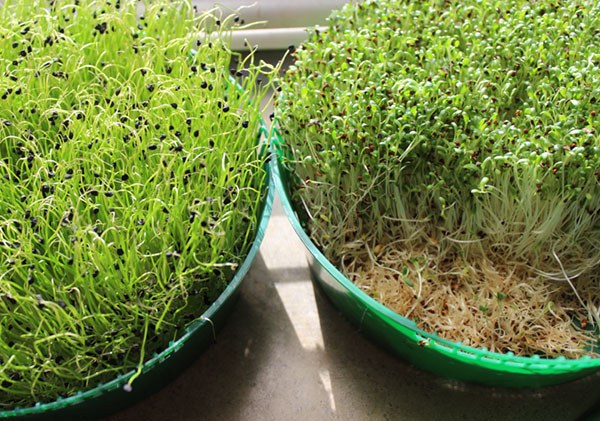
Health Benefits of Sprouts
Sprout seeds are first soaked and rinsed to remove enzyme inhibitors and also to help initiate germination. As the seed is nutritionally activated through the process of sprouting, it begins to break down starches into simpler carbohydrates, fats into fatty acids and proteins into amino acids. This, in effect, makes these nutritional properties more bioavailable to us when we consume them.
(Visit our Super Sprout Store for our recommended seed and sprouting supplies.)
Each particular sprout variety is composed of its own complex of vitamins, minerals, antioxidants and unique constituents, but one of the great benefits that all sprouts have in common is their high enzyme content.
These enzymes are also found in raw fruits and vegetables as well as fermented foods. They are very helpful for breaking down the foods we eat into usable nutrients and processing undigested waste material.
Sprouts assist in activating the immune system and are cleansing to the body. Those high in chlorophyll are especially effective at removing toxins from the cells and lymphatic system. They are also high in dietary fiber which promotes healthy bowel movements and intestinal functions.
Sprout Vegetable Vs. Sprouted Grain, Nut or Legume
Here on this page, we list some of our favorite super sprout varieties to give you an idea of some of the possibilities. While most of these seeds are primarily grown as "sprout vegetables", there are a few grains, like rye, buckwheat and wheatberries, that can be sprouted for 1-2 days to increase their nutritional value and then further processed, for example, into dehydrated sprouted bread, crackers, pizza crusts or to make rejuvelac.
Sprouting grains and some legumes before preparing them in recipes makes them easier to digest and assimilate. This is also true for some of the nuts and seeds like hulled sunflower, pumpkin and almond.
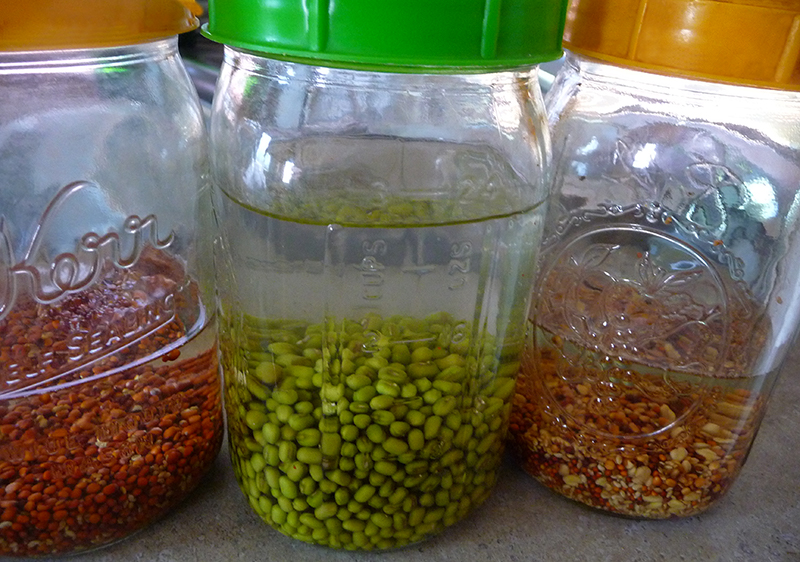
Learning How to Grow Sprouts
Sprouts can be grown from a number of different seeds, including many vegetables, spices, grasses and some legumes. Most sprouts are not widely available in stores but must be homegrown. Therefore, learning how to grow your own is a necessity if you are an avid sprout consumer.
You should, of course, always use high quality raw, non-GMO organic seeds to avoid some of the food safety issues associated with conventionally grown sources.
(Visit our Super Sprout Store)
Learning how to grow sprouts is a fairly simple process that requires minimum tools and supplies. They are usually sprouted in quart or half-gallon glass jars or on trays, either with or without a soil medium.
Jar sprouting is the easiest method for beginners and only requires a jar with a mesh lid for draining and of course about a tablespoon of seeds. It is good to start out with a single seed type and then, as you become accustom to the techniques involved, can branch out to blending seed mixes, creating a combination of flavors and spices.
You should, of course, always use high quality raw, non-GMO organic seeds to avoid some of the food safety issues associated with conventionally grown sources. (Visit our Super Sprout Store)
One of the greatest benefits to sprouting is the fresh living produce you will get from only a small amount of seeds. In addition, sprouts are relatively easy to grow all year long in most any indoor temperatures and are perfect for urban city living or those unable to grow an outdoor garden. The seeds themselves have a long shelf life and are extremely cost-effective when purchased by the pound.
There are a wide variety of super sprouts to choose from, all with their
own unique tastes and health benefits.
Top Types of Sprouts
(Use the links below to jump to desired section.)
Alfalfa Sprouts
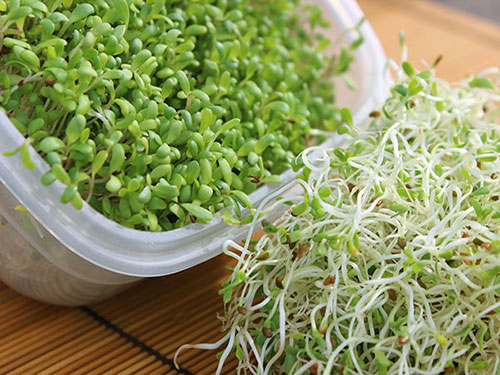
Alfalfa sprouts are probably one of the most popular sprout varieties known around the world. They are essentially one of the originals, often enjoyed on sandwiches for their neutral flavor and crunchy texture.
Today they are becoming less popular over other homegrown versions, but add a great balance to any seed mix or sprout salad blend. One cup of alfalfa sprouts contains 5-10% Daily Value for vitamin C, 13% DV for vitamin K and 1-3 grams of protein.
Alfalfa seeds are known to contain a controversial plant compound called
L-canavanine, which has received mixed reviews about
its potential toxicity and/or benefits to humans when consumed in large
amounts. (See our sprouts and food safety page for more on sprout toxins like canavanine.)
Broccoli Sprouts
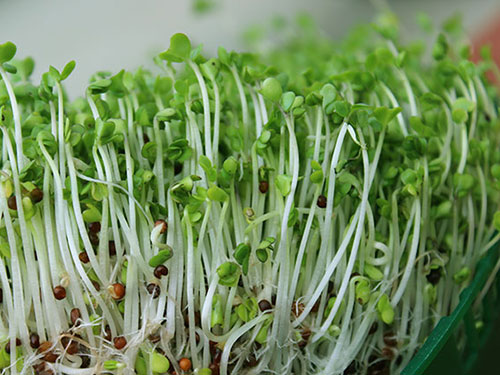
Broccoli sprouts became popular in the late 90's when researchers from Johns Hopkins University isolated a disease fighting phytochemical called glucoraphanin, which makes sulforaphane glucosinolate or SGS. This compound is common in all cruciferous vegetables in the Brassica genus, but is particularly concentrated in the sprouted seeds of broccoli.
Broccoli sprouts help to detoxify chemical carcinogens, boost immune response and protect cells from becoming malignant, mainly working to induce phase II antioxidant and detoxification enzymes.
They have additionally shown to be helpful for gastrointestinal disorders with a number of studies demonstrating health improvement for children with autism. The sulforaphane content in sprouted broccoli seeds was suggested to have the "capacity to reverse abnormalities that have been associated with ASD (Autism Spectrum Disorder)." (Source)
The sprouts contain high amounts of vitamin C as well as fiber. The best method for producing healthy green broccoli sprouts involves growing them vertically on a sprouting tray as opposed to a sprouting jar.
Buckwheat Greens
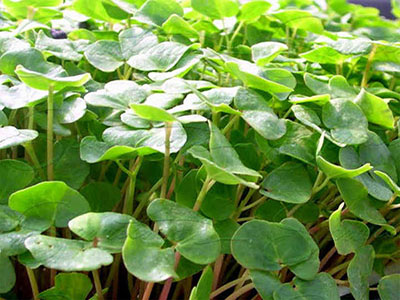
Buckwheat greens or "lettuce" are typically grown on trays using a hydroponic or soil-based medium, creating a dense mat of long slender sprouts with delicate and tender chlorophyll-rich green leaves.
Buckwheat greens in small quantities are a health-promoting nutritive sprout high in rutin, a bioflavinoid that can help to strengthen blood vessels. The greens also contain various phenols, such as isoorientin, orientin, isovitexin and vitexin, that are specifically produced during the germination process. (Source)

Sprouted dark hard-shelled buckwheat seeds were discovered to contain
a natural toxin called fagopyrin, which is also in the green leaves but
to a much lesser degree. The fagopyrin, a naphthodianthrone, is similar
to the hypericin compound found in St Johns wort herb, both of which
cause photosensitivity to light sources that can potentially cause skin
redness, itchiness after periods of sunlight exposure. This is
especially the case for fair-skinned individuals or when large amounts
of buckwheat greens are consumed.
According to a 2013 study, "the recommendable intake of buckwheat sprouts was estimated to be less than 40 g per day." This is a little over 1 cup of sprouts.
Clover Sprouts
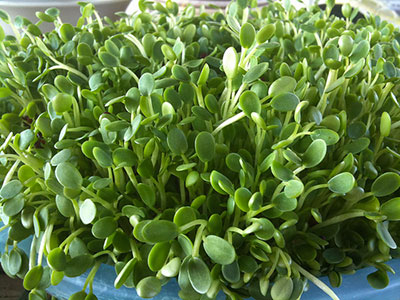
Clover sprouts, usually grown from red clover seeds, are similar in look and taste to that of alfalfa. They are one of those types of sprouts that are higher in isoflavones or phytochemicals that act like estrogens, which may or may not being of particular benefit depending on one's unique health issues. Clover sprouts can be a favorable sprout for menopausal women, helpful for relieving hot flashes and other related symptoms. The mature red clover blossom and leaves also have the same attributes when consumed as a tea, tincture or extract.
Clover is easy to grow and its mild flavor adds a nice balance when blended with other seed varieties. In late spring you can actually harvest your own wild red clover seeds if you happen to live close to a wild clover patch. Clover grows quite abundantly in meadows, fields and on hillsides in springtime climates worldwide. The seeds can be harvested when the flowers are dried by placing them in a bag and shaking out the seeds.
Cress Sprouts
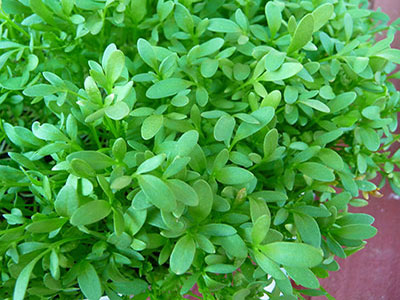
Cress, also called "pepper grass", has a super spicy flavor similar to radish sprouts, arugula, mustard greens and, of course, watercress. Cress is a particularly popular sprout in the United Kingdom where it is used as a common sandwich ingredient and widely available in most markets and produce stands. In Britain, it is commonly sold in soil or hydroponic tray flats year round.
The seeds are sometimes hard to find and have just recently been cultivated from certified organically raise plants. Most organic versions are the "curly cress" variety, which has a different shape to that of the British species but still retain the same cress-like flavor.
Cress is best grown as a vertical tray sprout. The seeds are mucilaginous when soaked and are therefore placed directly on the soil or growing medium, rather than germinated like other types of sprouts. They are fast-growing and require only a small amount of seeds for a full tray of healthy green pepper grass sprouts.
Fenugreek Sprouts
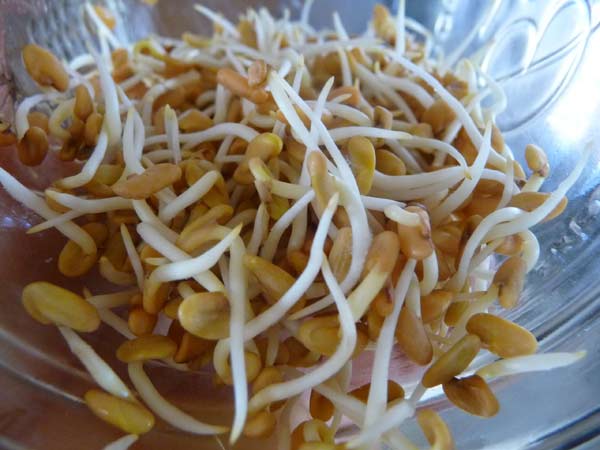
Fenugreek is one of those "herbs" that can be used directly as a seed or soaked and sprouted as a savory, nutritious sprout variety to be used on salads, meals or juiced for its specific effects as a lymph cleanser. Fenugreek sprouts are particularly beneficial to female breast health and can be used for periodic flushing of toxins from the breast tissue.
Fenugreek sprouts are also good for improving digestion and are a source of diosgenin, helpful for relieving symptoms associated with menopause. Containing substantially more phytoestrogens than other sprouts, fenugreek consumed in the average small-sized serving promotes estrogenic effects, but taken in higher doses, actually reduces excess estrogen by blocking the aromatase enzyme. This is one of the reasons concentrated fenugreek extracts are known to increase testosterone levels.
The golden seeds of the fenugreek plant are identified by their fragrant aroma that smells a lot like maple syrup. When consuming fenugreek sprouts, this scent can often be detected in the sweat and urine.
Mung Bean Sprouts
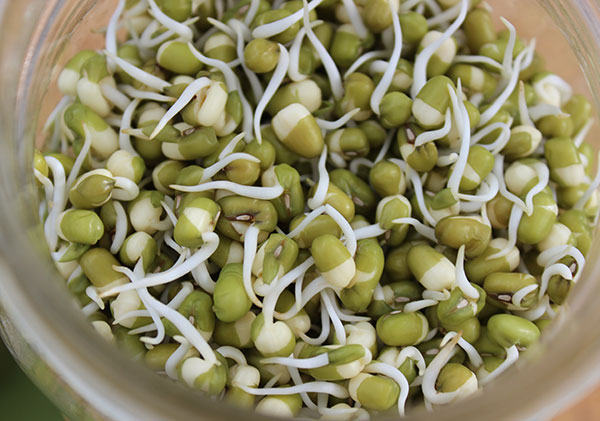
Mung bean sprouts are sprouted from the green mung bean, the same variety that is commonly hulled, split and cooked as "moong dal" in East Indian cuisine.
This version of sprouted mung bean is different than the long white bean sprouts most people may be familiar with, which requires a completely different sprouting technique. These are crunchy tender pea-like legumes produced from the same legume species but are higher in amino acids and general nutritional value as the legume is still attached. They are very easy to make using a simple jar sprouting method, which usually takes about 1-3 days.
The raw sprout can have a stronger flavor that some enjoy immensely, whereas others find them less palatable. Many people adhering to a raw vegan diet often use them on salads or atop meals, while others might prefer to cooked them after a slight sprouting process.
Generally sprouted legumes like lentil, mung and pea shoots can be consumed occasionally but should not become a regular part of one's daily diet. This is because uncooked beans contain a natural toxin called lectin. This element is less present when the beans are sprouted and is considerably diminished after the cooking process.
Onion Sprouts
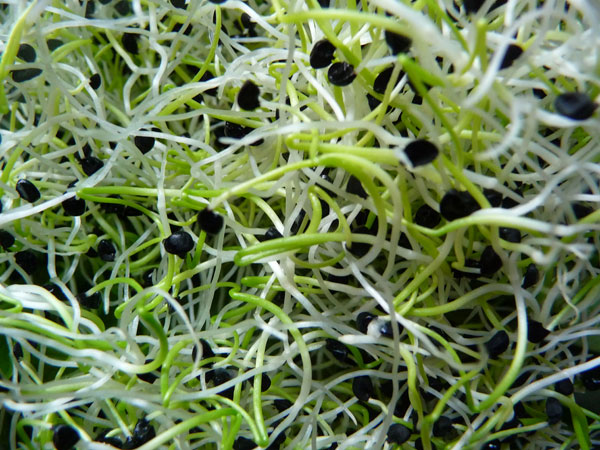
Onion sprouts are the micro-shoots of the onion plant and do not grow roots like other sprout varieties. Onions come from the genus Allium which also includes garlic, leeks and shallots.
Onion sprouts are a delicious tasting sprout that look like little baby onion chives. They have a sweet, nutty onion flavor that is not overpowering and won't give you "onion breath", like mature onions do, or make you cry. They are basically long green mini-scallions and are a delicious addition to any sprout salad mix or a top any entree for added flavor enhancement.
Onion sprouts are grown from black onion seeds and typically take longer to grow than other sprouts, usually 10-15 days from start to finish. They grow best, in our opinion, using a vertical tray method as opposed to a jar sprouting technique. But for beginner's, we would start with the jar method and build up to tray sprouting after you get down the basics. It is harder to find bulk "certified organic" onion sprouting seeds but most higher quality seed brands offer a "chemical-free" option.
Pea Shoots
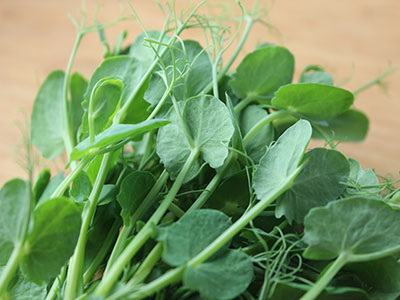
Asian cultures have long used fresh pea shoots in stir-fries and soup broths as a nutritious leafy green vegetable. However, the widespread concept of sprouting peas, to a large degree, is only a recent phenomenon. In the culinary world, pea greens have also achieved status as a sprout delicacy used by gourmet chefs and in raw food cuisine for their spiraling tendrils that have a unique and elegant look, perfect for food display.
Fresh cut pea sprouts or shoots contain vitamins and minerals including folate and Vit. A as well as chlorophyll, about 20% protein and are one of the highest in vitamin C content. The shoots are additionally comprised of flavonoids and polyphenols, specifically lignans and coumestrol, which are recently being studied for their anticarcinogenic and anti-inflammatory activities.
They have a delicious, nutty and distinct sweet pea-like flavor with a more concentrated amount of nutrients and enzymes available compared to most store-bought produce. They can be a great sprout to add to your arsenal of microgreen or sprout seeds. Usually, peas grow best in cooler climates below 80° F (26° C).
Generally, sprouted legumes like pea shoots should not be consumed in large quantities on a regular basis because of their lectin content.
Radish Sprouts
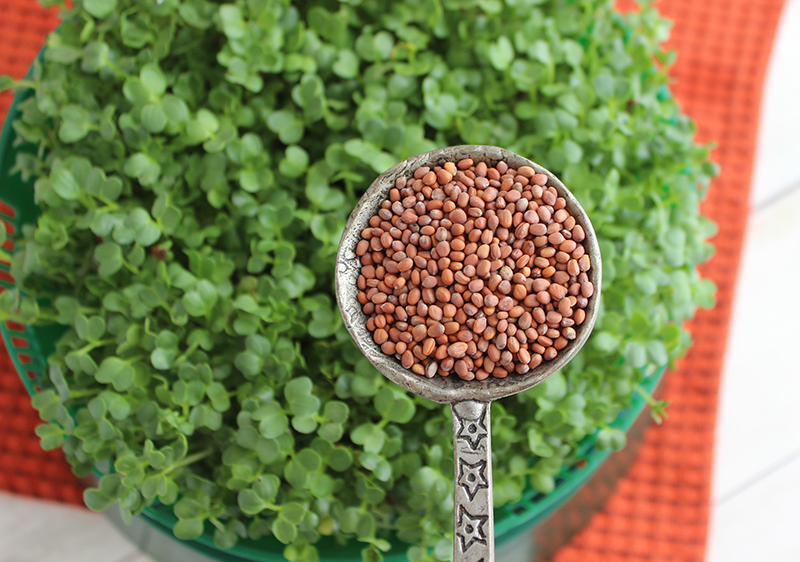
Radish sprouts are usually sprouted from red radish or daikon radish seeds. Both versions have a spicy flavor that tastes similar to the fully grown plant. Red radish sprouts have a beautiful red pigment in the sprout stem and sometimes the leaves. Daikon radish is sometimes available as a vertical sprout variety in markets and produce sections.
Learn how to grow daikon radish microgreens from seed to kitchen table.
Learn how to grow daikon radish microgreens from seed to kitchen table.
Being a cruciferous vegetable from the Brassica genus, radish also contains similar antioxidants like glucoraphanin and sulfurophane (SGS). Instead of glucoraphanin, radish contains glucoraphenin which converts to the isothiocyanate, sulforaphene rather than sulfurophane. (Source)
Red radish sprouts are a common sprout used in seed mixes to add spice and color. They are easy to grow using the jar sprouting method, while daikon radish seeds are more receptive to soil or hydroponic tray sprouting techniques.
Sunflower Sprouts
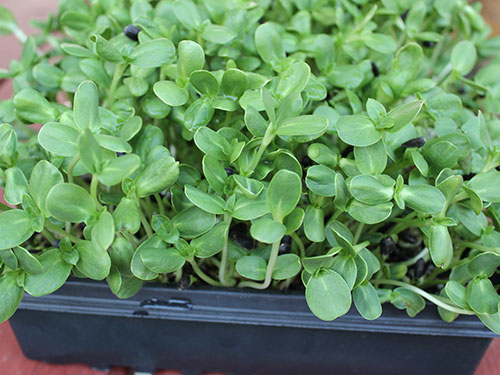
Sunflower sprouts,
also called "sunflower greens", are a quintessential seed sprouting
variety because of their larger-sized chlorophyll-rich leaves and
succulent white stems. Sunflower greens are sprouted with the small,
black, unhulled sunflower seeds that come from the "black oil
sunflower" plant. These are small dark seeds as opposed to the
white-striped unshelled seed most people are familiar with.
Sunflower
seeds, and especially their sprouts, provide a source of specific
nutrients such as lecithin and folic acid. They are grown like pea
shoots, wheatgrass and other microgreens, usually on a soil-based medium.
Sunflower sprouts are one of the top super sprouts for yielding high volumes of produce that can be enjoyed in a salad or as a substitute for lettuce.
They are an inexpensive way to grow your own produce indoors in the colder months, with one 20"x10" tray of greens yielding between 1-2 pounds of sprouts. Alternatively, they can be grown outside in partial sunlight when warmer seasons permit.
Wheatgrass
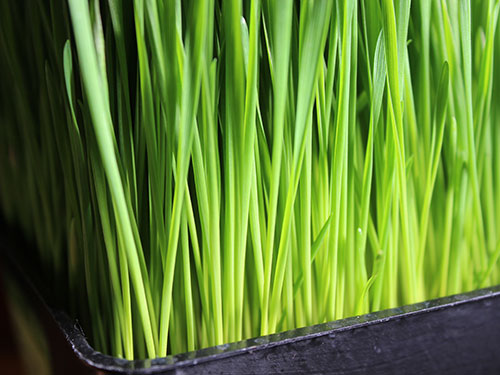
Wheatgrass is a sprouted grass that comes from germinating grains of wheat on trays of soil or hydroponic solution. The green blades are not consumed directly but juiced through a juicer to provide an extremely concentrated form of chlorophyll-rich liquid.
The wheat used to make wheatgrass is best when sprouted from hard winter wheat berries. The actual grass from the wheat grain is gluten-free, as all of the gluten content remains in the seed. When wheatgrass is harvested it is snipped off at the base, above the grain level.
Containing most all minerals, many vitamins and amino acids, the juice is a nutritious superfood elixir as well as a lymph and liver detoxifier. It is known to energize the body by supplying an instantaneous influx of nutrients and, through the process of detoxification, encourages the release of potential toxic waste accumulation.
Where to Buy Sprouting Seeds
Use this link to buy the best quality seeds at some of the lowest prices available. These seeds are organic and quality tested for germination rate, purity and pathogenic microbes. To ensure freshness and viability, we always purchase seeds in one pound sealed bags.
Bags of seeds are easy to store, don't take up much space, and when sprouted make an excellent survival food, next to wild edible greens, supplying pounds of fresh living produce for pennies on the dollar.
Precautions:
When sprouts are grown inappropriately they can be contaminated with mold, which is especially detrimental to those with mold allergies. It is important to purchase commercially grown sprouts from a trusted organic source that takes precautionary steps to guard against mold and/or uses organically grown seeds to prevent potential Salmonella and E. coli contamination.
Shop Related Products (About Affiliates & Amazon Associate Paid Links)
Affiliate Disclaimer: This section contains affiliate product links. If you make a purchase through our recommended links, we receive a small commission at no additional cost to you. Thanks for the support.

